Spring preparation in the greenhouse
Learn tools to use to make adjustments in the greenhouse in spring to obtain good production for the remainder of the season.
Managing the greenhouse climate has its challenges. The 2014 growing season with the lower than normal winter temperatures and, in general, higher light levels, have plants slightly ahead of traditional plant development schedule (about 7-10 days earlier).
Manipulating the plant to obtain the ideal plant balance over the next few weeks is the key to good production for the remainder of the season. Some tools to use are as follows:
Temperature
The greenhouse temperature should be adjusted to the light levels. On cloudy days the temperature should be lower while on sunny days the temperature should be higher. High temperatures at low light levels will result in thinner plants while low temperatures at high light levels will result in thicker plants. The 24-hour average temperature determines the speed of plant growth and development.
A higher 24-hour average will result in plants:
- growing faster
- flowers and fruit developing earlier
In general, a low night temperature conserves carbohydrates (sugars) resulting:
- in a stronger plant
- increased stem diameter
- increased leaf thickness, flower and fruit size etc.
The day/night temperature differential influences the shape of the plant. A large day/night differential provides a more generative impulse, whereas, no day/night temperature differential provides a more vegetative impulse.
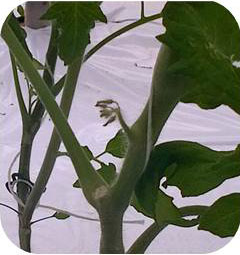
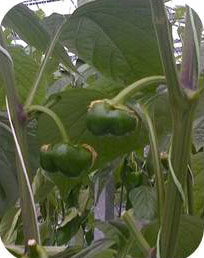
Water
Excess water applied to a crop has a more vegetative impulse while restricted water will provide a more generative impulse.
The method of watering will also influence the type of plant obtained. If a plant is provided with short frequent bursts of water, it will tend to be more vegetative, whereas a plant provided with long, infrequent bursts of water will tend to be more generative. This method of watering also influences the water level in the growing media in the bag. The short frequent watering maintains a wetter upper profile of the bag, allowing proliferation of roots in the upper layers, resulting in more even root distribution through the bag.
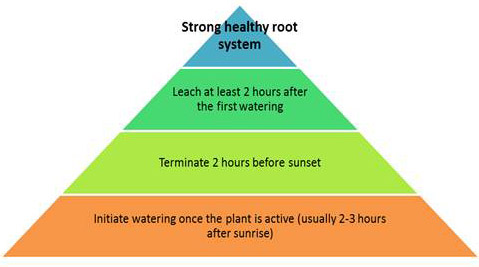
Accessible description for Figure 3
Vapour pressure deficit/humidity
The vapour pressure deficit (VPD) impacts the water uptake by the plant. A high VPD means that there will be more transpiration occurring when compared to a low VPD. Plants in greenhouse with a high VPD (low humidity) under high light conditions will transpire more and tend to be more generative than those grown in a greenhouse with a lower VPD under the same light conditions. Thus adjusting the VPD in the greenhouse will influence the type of plant obtained. Dramatic changes to VPD can result in leaf damage and can be quite severe as seen in photo below.
Plants grown under low VPD and are exposed to rapidly increasing VPD will show oedema symptoms.
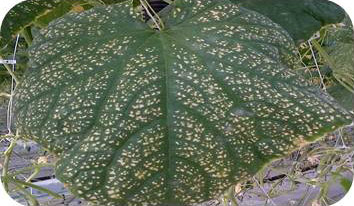
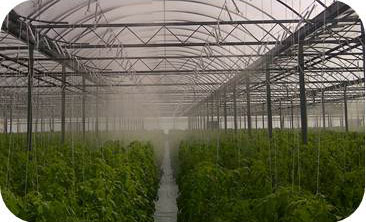
Nutrition
The electrical conductivity (EC) is used to control plant growth. A high EC results in restrictive water uptake providing a more generative impulse to the plant.
On the other hand, a low EC nutrient solution will provide adequate fertilizer to the plant but will also provide free water resulting in a more vegetative plant. Maintaining a high EC in the feed and a higher EC in the growing media will provide a more generative impulse to the plant.
The composition of the nutrient solution will also influence the plant. A solution deficient in an element will cause deficiency symptoms to occur in the plants causing decreased plant growth, and in severe cases, death.
However, a balanced nutrient solution containing all the essential elements at different ratios can influence plant habit, growth and flower development. A nutrient solution with a restricted N (higher K:N ratio) will result in a more generative action.
Accessible image description
Figure 3. Steps to a strong healthy root system.
Diagram showing steps to a plant's strong healthy root system:
- Initiate watering once the plant is active (usually 2-3 hours after sunrise)
- Terminate 2 hours before sunset
- Leach at least 2 hours after the first watering
- Strong healthy root system